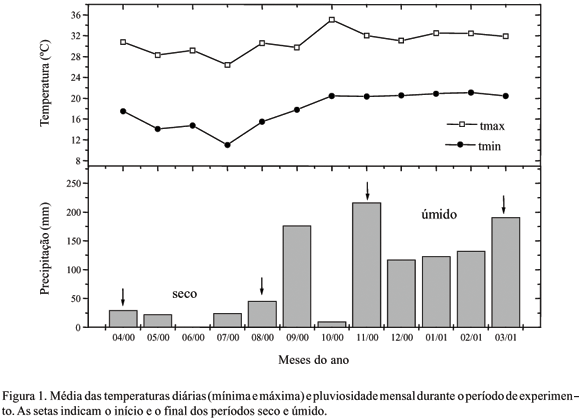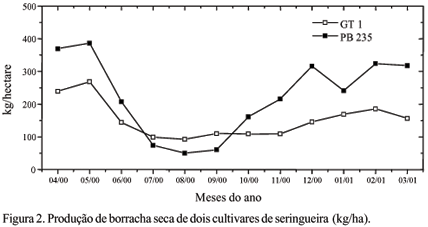Some reseachers have considered the influence of physiological and agrometerological factors on rubber tree yield, altough the real magnitude of these interrelationships remain unknown. Due to this, a study was carried out with two rubber clones, PB 235 and GT 1, cultivated in Votuporanga,São Paulo State, Brazi, in order to examine the possible correlations between physiological parameters and yield during the dry and wet 2000-2001 seasons. The yield during the period was 4550 kg/ha: PB 235 yield was 59.9%, which was 12.6% higher than GT 1 during the dry season and 29.8 % during the wet season. The photosynthetic rate had varied between 2.19 to 3.46 µmolm-2s-1 in GT 1, and 2.31 to 3.93 µmolm-2s-1 in PB 235; the transpiration rate, between 0.66 to 1.88 mmolm-2s-1 and 0.78 to 1.77 mmolm-2s-1, respectively; and, the stomatal conductance, between 0.021 to 0.041 molm-2s-1 and 0.021 to 0.043 mol m-2s-1, respectively. In both clones, the absence of nocturnal stem turgescence recovery during the dry season could explain the variation of productivity. This was more intense for PB 235 in consequence of the significant decrease of the photosynhtetic rate and carbon assimilation efficiency during this period.
rubber tree; Hevea brasiliensis; yield; gas exchange; stem turgescence







